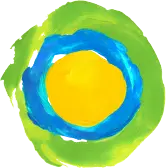Organización Sin Fin de Lucro
Osa Sea Turtle Conservation Program
Acerca de
The Osa Sea Turtle Program has been developing regional sea turtle protection, conservation and research activities focusing on the nesting beaches of Carate, Rio Oro, Pejeperro, and Madrigal, which will result in the gathering of baseline information to contribute to the local, regional, and global study of populations of olive ridley (Lepidochelys olivacea), Pacific green (Chelonia mydas), and leatherback (Dermochelys coriacea) sea turtles. Project long-term goals also include (i) Protecting the most important sea turtle nesting areas on the Osa Peninsula - Carate, Rio Oro, Pejeperro and Madrigal beaches - through nightly and daily patrols. (ii) Decreasing poaching of sea turtle eggs through a community-based initiative. (iii) Standardizing and unifying methods and techniques (recording data, tagging, and using hatcheries) for sea turtle conservation and management on the Osa Peninsula. (iv) Finally, we look to increase awareness about the importance of sea turtles, their habitat, and all of the Osa's natural ecosystems.
Áreas de Impacto incluyen
- Animales
- Medio Ambiente & Sostenibilidad
- Voluntariado
Ubicación
- Carate, None None, Costa Rica


